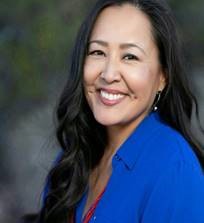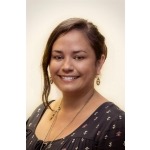Addressing Historic Trauma to Improve Breastfeeding and Safe Sleep Among Indigenous Families

Kim Moore-Salas, IBCLC, enrolled member/citizen of Navajo Nation

Shawn Meyer, RN, BSN, CLC, member of Turtle Mountain Band of Chippewa
Please note, we use the terms Indigenous People and Native Americans to reflect the preference of our interviewees.
“Breastfeeding is a cultural tradition,” shares Shawn Meyer, RN, BSN, CLC, a public health nurse and member of Turtle Mountain Band of Chippewa. “It’s ingrained in our history and the history of many other tribes across the country.”
The Native American breastfeeding tradition Meyer describes, however, has been disrupted by centuries of historical trauma, an insight that helps explain why Native Americans now have one of the lowest rates of breastfeeding of all other racial and ethnic groups.
When Indigenous People were forcefully dispossessed from their land, they not only lost their homes but were separated from their way of life. Cultural teachings and traditions were prevented by mandated assimilation policies, one of the most traumatic being the removal of native children from their families—in these instances, children were placed into boarding schools where their long hair was cut and they were punished, often violently, for speaking their language or practicing their cultural traditions. Even after the boarding schools were closed, hundreds of children continued to be separated from their families until the 1970s.
“My parents were both boarding school children,” says Kim Moore-Salas, International Board-Certified Lactation Consultant (IBCLC) and enrolled member/citizen of Navajo Nation, whose personal experience is representative of her community. “Forced separation violently disrupted first foods for our children and negatively altered the family dynamic, creating a generational disconnect. For many decades, our children have often gone without this imperative natural bonding experience, let alone the significant nourishment needed for them to grow.”
As faculty experts on the NICHQ-led National Action Partnership to Promote Safe Sleep Improvement and Innovation Network (NAPPSS-IIN), both Meyer and Moore-Salas know that improving breastfeeding rates not only improves health outcomes for native mothers, but also saves Native American babies, a population who experiences the highest rate of sudden unexplained infant deaths (SUID). Breastfeeding, which can reduce the risk of sudden infant death syndrome (SIDS) —one of the leading causes of SUID—by as much as 70 percent, represents a critical opportunity to preserve the health of the next generation of Native Americans and begin to address an alarming lack of equity in national infant mortality rates.
A first step toward success hinges on addressing how historical trauma damaged Indigenous People’s relationships with public institutions, specifically healthcare. This is especially important for efforts like NAPPSS-IIN that seek to reduce SUID rates by improving breastfeeding rates and safe sleep practices, together.
For a favorable outcome then, the question remains: How do we synthesize the promotion of breastfeeding and safe sleep practices within the context of historical trauma? Collectively our Indigenous healthcare professionals offer these three ideas:
Create a safe space to explore ideas and gain input
Discussions regarding safe sleep practices and breastfeeding with Indigenous families begin with identifying and acknowledging the cultural traditions inherent in both. This is especially true when working with communities that have experienced significant historical trauma.
“Families need to know their voices are being heard and that their traditions are being honored,” says Meyer. “Otherwise, they may understandably hesitate to engage in honest conversations, open up about their own challenges and be receptive to recommendations.”
Talking circles among Indigenous women in their traditional setting are opportunities to have these conversation in a safe space. Moore-Salas advises having healthcare professional from the community, or an Indigenous healthcare professional, facilitate the talking circle.
Similarly, Meyer recommends welcoming people that support the client to attend clinic visits with new and expecting mothers and join in these conversations. This extra step can keep mothers from feeling vulnerable and isolated from their supports; and it elevates the community’s voice as one that deserves attention and respect.
Engage Indigenous communities with a spirit of kinship
“Create trust by building a rapport with the community,” Moore-Salas advises. “Don’t just go in imposing your will to promote change. You have to meet them where they’re at, learn their way.”
Efforts to spread breastfeeding and safe sleep practices can quickly seem condescending and even offensive when delivered by an outsider. Genuinely engaging with the community in the places where they spend the most time—family events, meal sites and youth councils, for example—can encourage authentic relationships that open the door for shared learnings and shared teachings. Moreover, providing education at different community sites also helps reach multiple generations, all of whom play a vital role in maternal and infant health outcomes.
When visiting a Native American community, visitors should also remember that they are guests. Each community has unique traditions and protocols; honoring them involves talking to the community elders and asking permission when appropriate.
Support tribal efforts to reclaim their breastfeeding tradition
Movements to reclaim breastfeeding as an Indigenous source of food, a birthright, and a means for cultural preservation have sparked across Indian Health Services. For example, when Meyer was working with local tribal agencies in Wisconsin, she interviewed women from different communitites, asking them to share their personal stories about breastfeeding. The interview videos were then circulated throughout the community; shared at Tribal and Women, Infants and Children (WIC) clinics; and eventually promoted online through their local tribal health department website.
Similarly, Moore-Salas assists in facilitating the Indigenous Breastfeeding Counselor (IBC) course with course developer Camie Jae Goldhammer, MSW, IBCLC. The course’s curriculum is tailored to the various cultural norms of each community they serve.
“We talk about historical trauma and disparate impact,” says Moore-Salas. “We talk about how the benefits of breastfeeding can unravel the trauma and encourage individual and community healing, while being mindful of and in connection with their specific community’s cultural values and teachings. These conversations help the women of that community put all of the pieces together. Reclaiming breastfeeding as an Indigenous source of food—one that is inherently theirs—forms the glue to hold those pieces together. The women we work with go back to their communities and they start creating coalitions to promote nurturing and intuitive first foods support and education.”
Embracing these best practice approaches can help advocates of infant health competently engage Native American communities, while learning and respecting their unique history.
For more ideas on addressing racial and ethnic disparities, read this recent article on identifying implicit bias from an internationally recognized expert in healthcare disparities and cross-cultural health.
